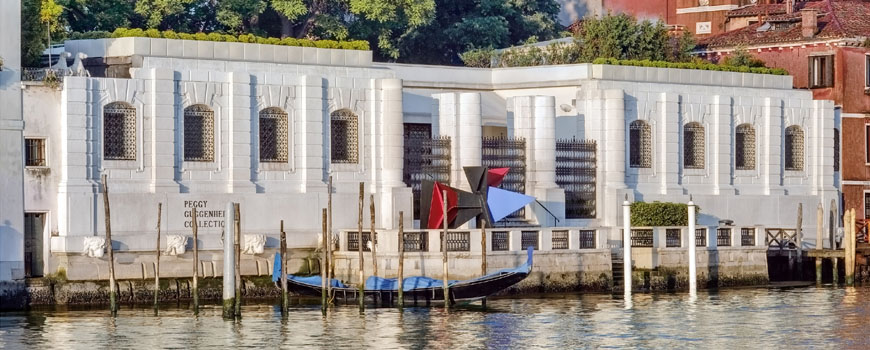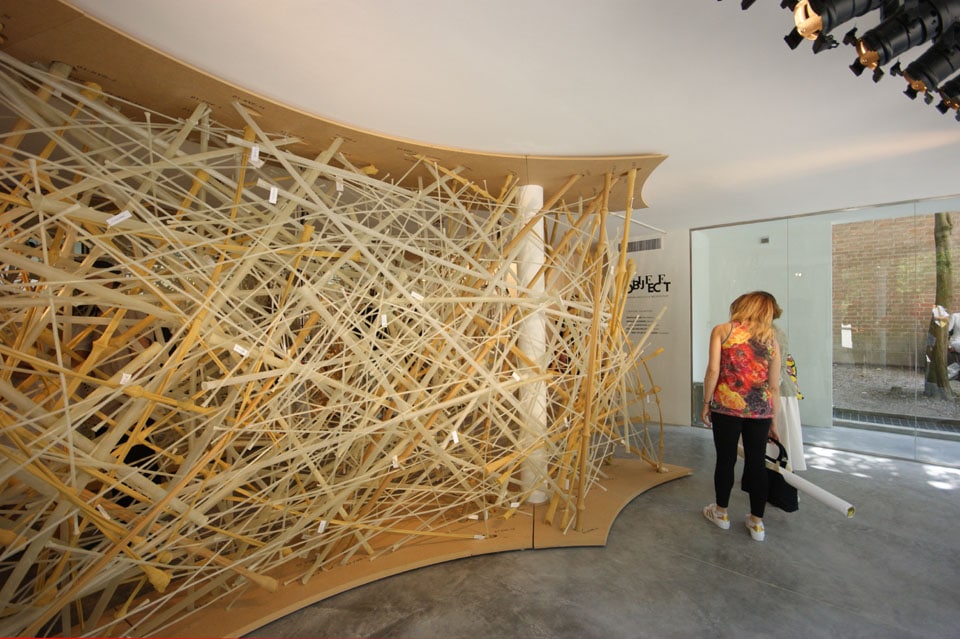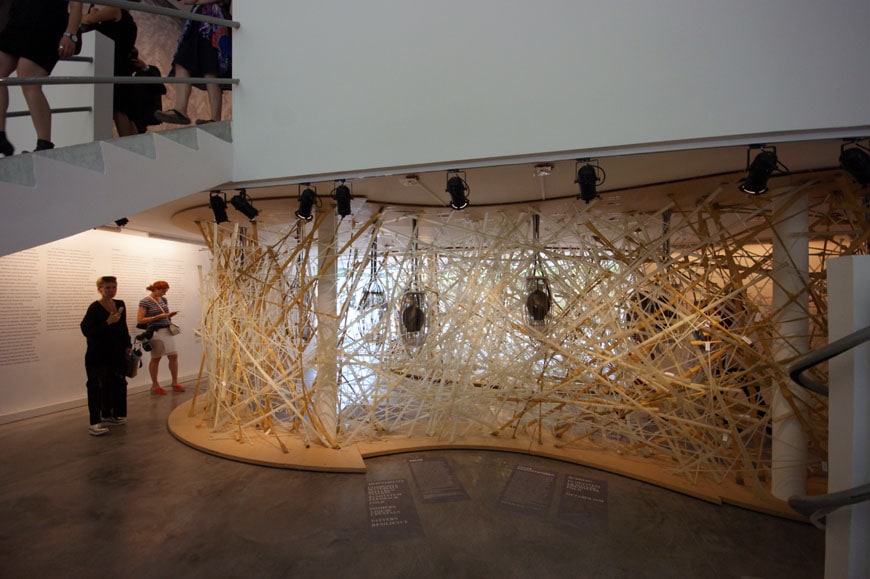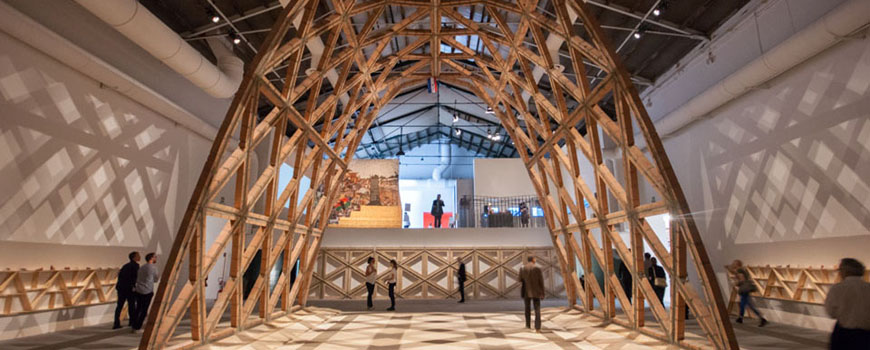LifeObject – Israel at the Venice Architecture Biennale 2016
Commissioners:
Arad Turgeman, Miki Gov
The pavilion of Israel in the Biennale’s Giardini, Venice
LifeObject: Merging Biology & Architecture – Israel at the Venice Biennale 2016
The relationship between Architecture and Biology is the key theme of the exhibition of Israel at the 15th Venice Biennale, entitled LifeObject.
The exhibition presents an array of works that, collectively, form a dialogue connecting architecture to science, and especially to those scientific fields related to biology and bio-technologies.
Yet, such a relationship is not limited to the influence that nature historically has always had on architectural forms and/or materials. Indeed, the Israeli exhibition focuses primarily on the seminal influence that biology could have on the way we conceive and design buildings, by creating a parallel between living creatures and constructions and casting a speculative glimpse on future, potential forms of innovative architecture.
The centerpiece of LifeObject is an installation that combines natural elements with composite and bio-engineered artificial materials: a “living form” which reacts to the environment and, like all biological systems, is based on the concept of resilience. Resilience which also our human community is more and more required to be based upon, especially in a country experiencing a permanent geopolitical crisis, such as Israel.
“LifeObject” core installation, photos © Inexhibit, 2016
Along with the core installation, also the other projects on view – all developed by multidisciplinary teams of architects, engineers, and scientists – depict how biology could positively influence building, urban, and landscape regeneration and development.
For example Urban Angiogenesis / Bio Smart City 3.0 (Knafo Klimor Architects and Prof. Ronit Satchi-Fainaro) investigates the use of medical diagnostic techniques and nanomedicine to detect urban overcrowding by creating a parallel between vascular growth in cancer with the densification of the city of Tel Aviv.
Urban Angiogenesis / Bio Smart City 3.0, installation views, photos © Inexhibit, 2016
Breathing Building (Arch Farah Farah, Arch. Moti Bodek, and Prof. David Elad) proposes a bio-inspired sustainable, and natural-ventilated building to be installed off the coast of Ashdod, in the Mediterranean Sea.
Breathing Building, photo © Inexhibit, 2016
Nanocellulose Desert Shelter (Ncarchitects, Guy Austern, Prof. Oded Shoseyov) is a project which makes use of different types of nanocellulose-based materials to create a sustainable, recyclable and flexible educational and cultural center for the Bedouin community living in the Negev desert.
Nanocellulose Desert Shelter, photos © Inexhibit, 2016
LIFEOBJECT: Merging Biology & Architecture
Curators-Exhibitors: Ido Bachelet, Bnaya Bauer, Arielle Blonder, Yael Eylat Van-Essen Noy Lazarovich. Teams of Scientists & Architects: Dan Shechtman, Einat Kalisch Rotem, Madlan; Ronit Satchi-Fainaro, Tagit Klimor; David Elad, Moti Bodek, Farah Farah; Uri Shavit, “Commons” | Envisioning the new public space; Boaz Tadmor, Dan Eytan, Ruth Lahav; Oded Shoseyov, NCArchitects, Guy Austern; Erez Livneh, ShaGa Shyovitz Architects.

Built in 1807, the Giardini della Biennale (Biennale’s Gardens) is the main venue of the annual art and architecture exhibitions of the Venice Biennale

Venice
copyright Inexhibit 2024 - ISSN: 2283-5474














